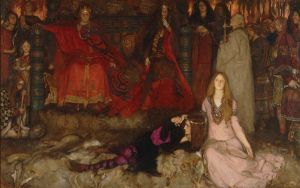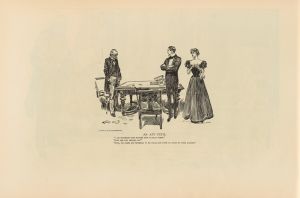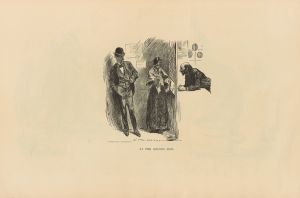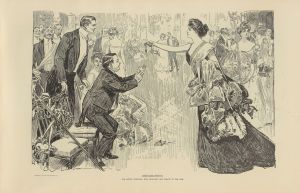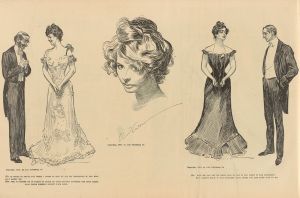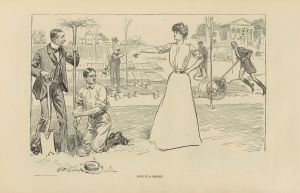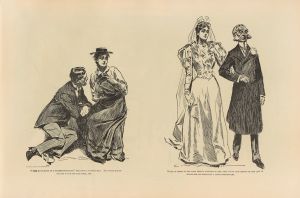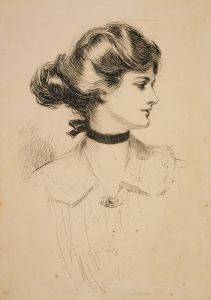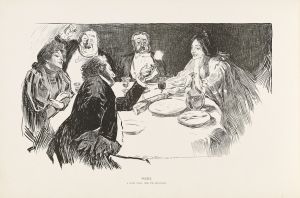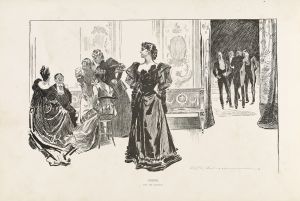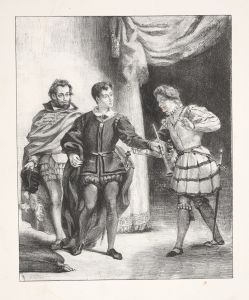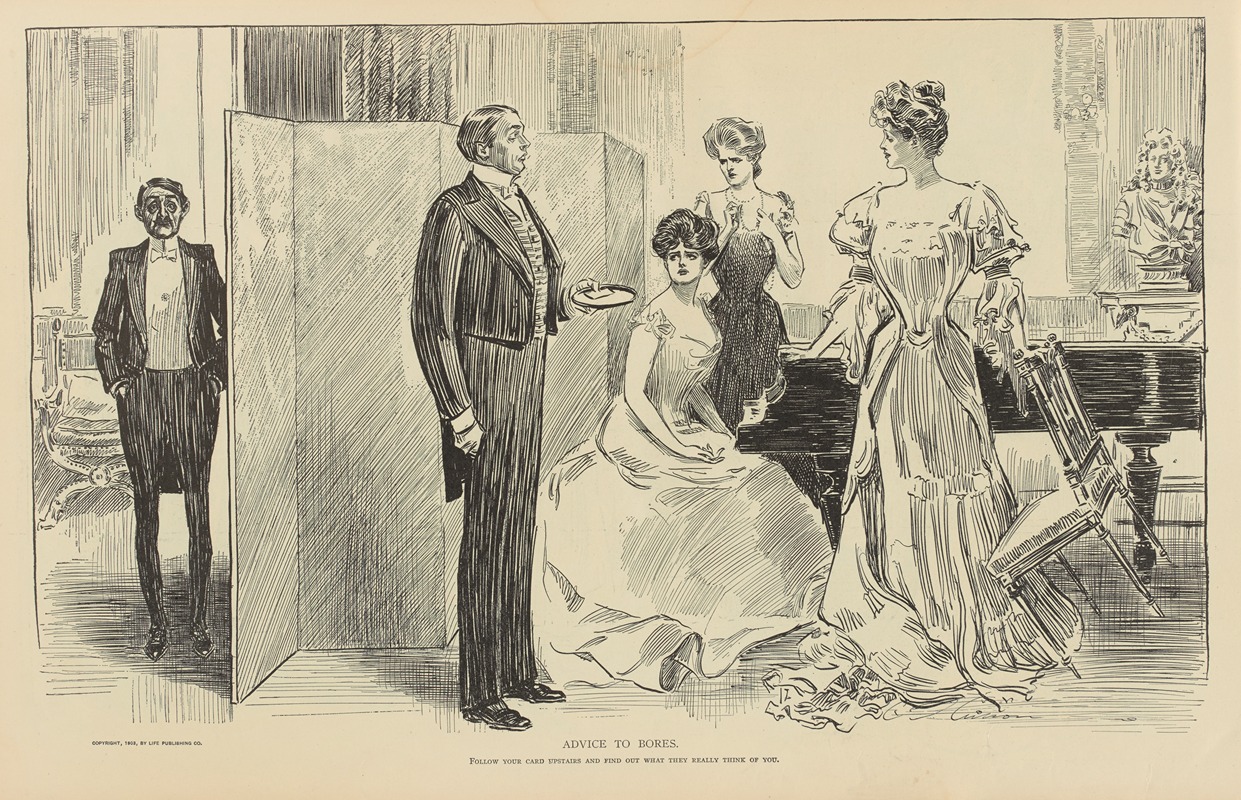
Advice to bores, follow your card upstairs
A hand-painted replica of Charles Dana Gibson’s masterpiece Advice to bores, follow your card upstairs, meticulously crafted by professional artists to capture the true essence of the original. Each piece is created with museum-quality canvas and rare mineral pigments, carefully painted by experienced artists with delicate brushstrokes and rich, layered colors to perfectly recreate the texture of the original artwork. Unlike machine-printed reproductions, this hand-painted version brings the painting to life, infused with the artist’s emotions and skill in every stroke. Whether for personal collection or home decoration, it instantly elevates the artistic atmosphere of any space.
Charles Dana Gibson was a prominent American illustrator, best known for his creation of the "Gibson Girl," an iconic representation of the American woman at the turn of the 20th century. His illustrations captured the spirit of the era and were widely published in magazines such as Life, Harper's Weekly, and Scribner's. One of his works, "Advice to Bores, Follow Your Card Upstairs," exemplifies his keen eye for social commentary and his ability to capture the nuances of social interactions.
"Advice to Bores, Follow Your Card Upstairs" is a black-and-white illustration that reflects Gibson's characteristic style, which combines detailed line work with a satirical edge. The illustration depicts a social scene, likely set in an upper-class environment, where individuals are engaged in conversation and social rituals typical of the late 19th and early 20th centuries. The title itself suggests a humorous take on social etiquette, implying that those who are considered "bores" should discreetly excuse themselves by following their calling card upstairs, a reference to the practice of leaving a card when visiting someone's home.
Gibson's work often highlighted the social dynamics and expectations of his time, and this illustration is no exception. It provides insight into the social customs of the era, where formal visits and the exchange of calling cards were integral to maintaining social connections. The humor in the piece likely stems from the exaggerated politeness and the unspoken rules governing social interactions, which Gibson deftly captures through the expressions and body language of his characters.
The "Gibson Girl," although not explicitly featured in this particular illustration, is an underlying presence in much of Gibson's work. She embodied the idealized image of beauty, independence, and confidence, and her influence can be seen in the way Gibson portrays women in his illustrations. His female characters often exude a sense of poise and self-assurance, reflecting the changing roles of women during this period.
Gibson's illustrations were more than just artistic expressions; they were cultural artifacts that documented the societal norms and values of his time. His ability to blend humor with social critique made his work both entertaining and thought-provoking. "Advice to Bores, Follow Your Card Upstairs" is a testament to his skill in capturing the subtleties of human behavior and the complexities of social etiquette.
In summary, Charles Dana Gibson's "Advice to Bores, Follow Your Card Upstairs" is a notable example of his work as an illustrator and social commentator. Through his detailed and humorous depiction of a social scene, Gibson offers a glimpse into the customs and expectations of the early 20th century. His illustrations remain significant not only for their artistic merit but also for their ability to convey the cultural and social dynamics of their time.





